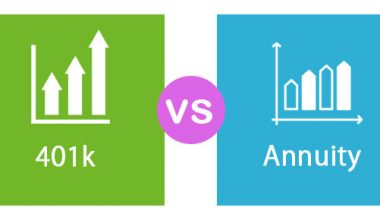Alternative lending may offer appealing absolute and risk-adjusted return characteristics as investors look to diversify their portfolio exposures beyond traditional assets. If investors allocate some of their cash to alternative lending, they may be able to benefit from a long-term change in the way that individuals and small businesses gain access to credit. Here we’ll look at the different types of alternative lending and the top lending companies for a small business.
Alternative Lending
Alternative lending refers to any loan secured outside a traditional financial institution. Direct lending, equity financing, and debt financing are just a handful of the many credit options that fall under alternative finance. Although alternative lending companies have various lending options, they focus more on business lending and financing options than all the other services a regular bank offers.
Alternative lenders are typically more accessible than banks and frequently offer a quicker financing procedure due to their usage of online tools that quicken the underwriting process.
How Does Alternative Lending Work?
Consumer peer-to-peer lending was followed by alternative lending, which was mostly a result of the Great Recession. During this period, nonbank lenders began to bridge the funding gap left by well-established financial organizations like banks and credit unions. Alternative financing is already very popular with consumer and small business loans. These nonbank lenders might provide small businesses with direct loans using money they have personally raised, act as a middleman between investors and borrowers, or even work with banks to originate loans.
Examples of typical alternative finance products include the following:
- Term loans.
- Lines of credit.
- Equipment loans.
- Invoice factoring.
- Merchant cash advances.
Alternative lending companies usually operate online and rely on technology to assess, calculate, and provide different types of company loans. In contrast to traditional lenders, who typically rely on a human review process to analyze loan applications, alternative business lenders frequently use digital data sources, such as bank accounts, merchant accounts, or accounting software, to examine your finances and evaluate your creditworthiness.
Best Alternative Lending Companies for Small Businesses
Small-business owners apply to alternative lenders more frequently than small banks and at a rate almost equivalent to that of major banks, according to survey data from a Federal Reserve report from 2022. If you’re considering non-traditional business finance, start by contacting the following alternative lending companies below:
#1. Credibility Capital
Credibility Capital offers business loans with affordable interest rates and payback schedules. There are loans up to $500,000 with terms of up to five years available. Since there are tight eligibility requirements, unlike some alternative lenders, this is a wonderful option for well-established small businesses. It is necessary to have a 650 credit score, 24 months of work experience, and a minimum yearly salary of $200,000.
#2. Bluevine
With Bluevine, you may apply for a business line of credit and receive approval in just a few minutes. After getting accepted, you might be able to receive your money in as little as 24 hours. Bluevine offers loan lines with 12-month payback terms up to $250,000. Start-up companies or those with bad credit may also be eligible for this line of credit with a minimum credit score of 625 and at least six months of operation.
#3. OnDeck
You can utilize OnDeck to apply for a line of credit or a short-term loan depending on the type of business funding you need. The maximum loan amount for an OnDeck term loan is $250,000, and the full payback term is 24 months. The lender’s line of credit is available for amounts up to $100,000 and has terms of up to 12 months. In as little as 24 hours, OnDeck can fund loans using the method of your choice.
#4. Fundbox
Fundbox might allow you to apply for a business line of credit after just six months in operation. There are credit lines with payback terms of 12 or 24 weeks and credit limits up to $150,000. If you have at least a 600 credit score, Fundbox can be a great option for businesses with bad credit.
#5. Fora Financial
If your credit score is at least 550, Fora Financial could be able to offer you a new form of term loan. Fora Financial offers 15-month working capital loans with amounts ranging from $5,000 to $750,000. If your loan application is approved, Fora may be able to get back to you in under 24 hours and provide you with the funds you require in under 72.
#6. Taycor Financial
For a variety of business requirements, such as those for computers, printers, trucks, restaurant equipment, and more, Taycor Financial provides equipment loans. With investment of up to $2,000,000, you may launch and expand your business to new heights. Among other possibilities for repayment, there are delayed and semi-annual installments.
Types of Alternative Lending for Small Businesses
Alternative lenders frequently offer these loans.
#1. Term loan
For medium- to large-scale commercial requirements like facility upgrades or the purchase of new equipment, term loans are one-time payments. Online lenders typically provide loans in the $5,000–$500,000 range or above. Even while interest rates are subject to vary, once they are set, they won’t affect your monthly payments. You can choose a long-term loan (lasting longer than three years) or a short-term loan (lasting between three and 18 months), depending on how much cash your business needs (three to 10 years).
#2. Line of credit
Similar to a credit card, a line of credit gives you access to revolving funds where you can borrow up to a certain amount. All that is required of you is that you repay the money you borrowed plus interest. You may utilize the funds for any business-related reason. Credit limitations may be worth between $1,000 and $250,000. The credit line is renewed with each payment made up until the end of the withdrawal period.
#3. Equipment financing
Large assets that your business needs, including computers, vehicles, and other manufacturing equipment, can be funded via equipment finance. Lenders may utilize the equipment as security when you are behind on loan payments. You can anticipate a maximum loan amount of $1 million and up to 80% financing.
#4. Merchant cash advance
A merchant cash advance (MCA), a novel type of business financing, provides cash up front in exchange for a portion of future revenue, typically in the form of credit card transactions. The typical amount of funding is between $250,000 and $500,000. Remember that in MCAs, factor rates frequently take the place of traditional interest rates.
#5. Invoice factoring
Invoices that are unpaid can be sold by a company to a factoring company in exchange for up-front cash, which typically ranges from 60% to 97% of the total bill amount. The company then collects the client’s payment, deducts a little fee, and sends the owner the remaining money. It’s simple to mix up invoice factoring with invoice financing, which is borrowing money based on the invoices.
Which Is an Example of Alternative Financing?
Rewards-based crowdfunding, equity crowdfunding, revenue-based financing, online lenders, peer-to-peer consumer and commercial lending, and invoice trading third party payment platforms are a few examples of alternative finance activities carried out through “online marketplaces.”
What Are the Pros and Cons of Alternative Loans?
The benefits of using a alternative lending
- An expedient and simple application process
- Within one business day, the funds could be in your account.
- You can get financing even if your credit is bad or nonexistent.
- The money can be used however you see fit.
- Over time, you might establish a rapport with a lender and obtain reduced rates.
Before working with alternative lending, take these limiting factors into account.
- Sometimes, non-bank lenders impose higher interest rates.
- You might only be eligible for a sizable loan.
- Non-bank lenders might cease to exist.
- If you pay back your loan early, you might not receive any discounts.
- Some non-bank lenders could tack on additional
What Are 4 Types of Alternative Credit?
Typical forms of alternative lending:
- Direct Lending.
- Venture Debt.
- Structured Equity Products.
- Debt Financing.
- Mezzanine Financing.
- Non-Dilutive Funding
Why Is Alternative Lending Important?
Compared to traditional lending, you might be able to obtain lower interest rates or longer payback terms. This might be particularly helpful for companies that would find it difficult to make a regular monthly payment.
What Is the Most Popular Form of Alternative Financing?
The most widely known alternative fundraising method is crowdfunding. It is merely a website where many people make little investments in a company.
What Are Some Concerns with Alternative Loans?
Small businesses who employ alternative funding have less experience and so pose a larger risk. Because of this, non-bank lenders may impose higher interest rates or shorter terms, resulting in hefty payments that may negatively impact your cash flow.
How Big Is the Alternative Lending Market?
Despite the epidemic, ABL activity persisted, although the market undoubtedly suffered. ABL volume in the United States reached $72.4 billion in 2020, the lowest level since 2010.
Conclusion
While rising inflation is dampening consumer sentiment in the United States, we believe that alternative lending’s shorter term may mitigate its exposure to interest rate increases, should the Federal Reserve continue to raise rates as widely anticipated by the market.
We believe alternative lending can diversify investor’s allocations to traditional and private corporate credit because it is a private credit option with a primary focus on consumers. The yield, maturity, and amortization features of alternative lending remain in stark contrast to those of conventional corporate finance. Because of these and other factors, alternative financing is worthy of consideration for inclusion in investor portfolios at all stages of the business cycle.
Related Articles
- Hard Money Lending: Meaning and All You Need to Know
- Debt Factoring: Guide for any Business(+ Practical Examples)
- Factoring Company: Definition and Guide To The Best Companies
- Invoice Factoring: All You Need Explained!! (+ Loan Options)






